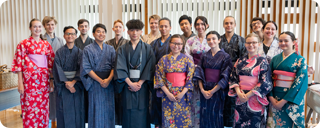研究成果 Research Results
- TOP
- News
- Research Results
- Citrus-like smell disturbs working memory for orange colours
Citrus-like smell disturbs working memory for orange colours
2018.09.18Research ResultsLife & Health
Olfactory modulation of vision is not well understood whereas visual modulation of olfaction has been more fully investigated.
Dr. Tsuyoshi Okamoto, Associate Professor, Dr. Kaori Tamura, Research Assistant Professor at the Faculty of Arts and Science, and Mr. Masayuki Hamakawa, a student at the Graduate School of Systems Life Sciences performed a colour memory experiment with a citrus-like smell, decanal to reveal whether there is olfactory modulation of colour working memory. Four types of colours, orange, green, blue, and pink were used in the experiment. They measured event-related potential P3, which is involved in attentional processes of working memory.
They found a decline in the rate of correct guesses for orange colours when the citrus-like smell were presented, whereas there was no effect in those for other colours. Furthermore, the odour suppressed P3 during reddish-colour retrieval, including orange. Their findings raised a possibility that a specific colour and odour combination can modulate on working memory processing.
The study was supported by Kobayashi International Scholarship Foundation and Qdai–jump Research Program (grand number 27818, 2015–2017).
For more information about this research, see
PLOS ONE, Kaori Tamura, Masayuki Hamakawa, and Tsuyoshi Okamoto: Olfactory modulation of working memory: How does citrus-like smell influence the memory of orange colour?

Fig. 1. A model of how the citrus-like smell disrupted working memory for orange colours. The decline of P3 indicated the lower allocation of attention to the orange colours than that to other colours. The combination of the cirus-like smell and orange colours might allocate more attention resource for olfactory inputs, and it would lead lower attention to the orange colours, and lower rate of correct guesses for orange colour memory.
Journal Reference
Olfactory modulation of colour working memory: How does citrus-like smell influence the memory of orange colour?, ,PLOS ONE, 10.1371/journal.pone.0203876Research-related inquiries
- TOP
- News
- Research Results
- Citrus-like smell disturbs working memory for orange colours































